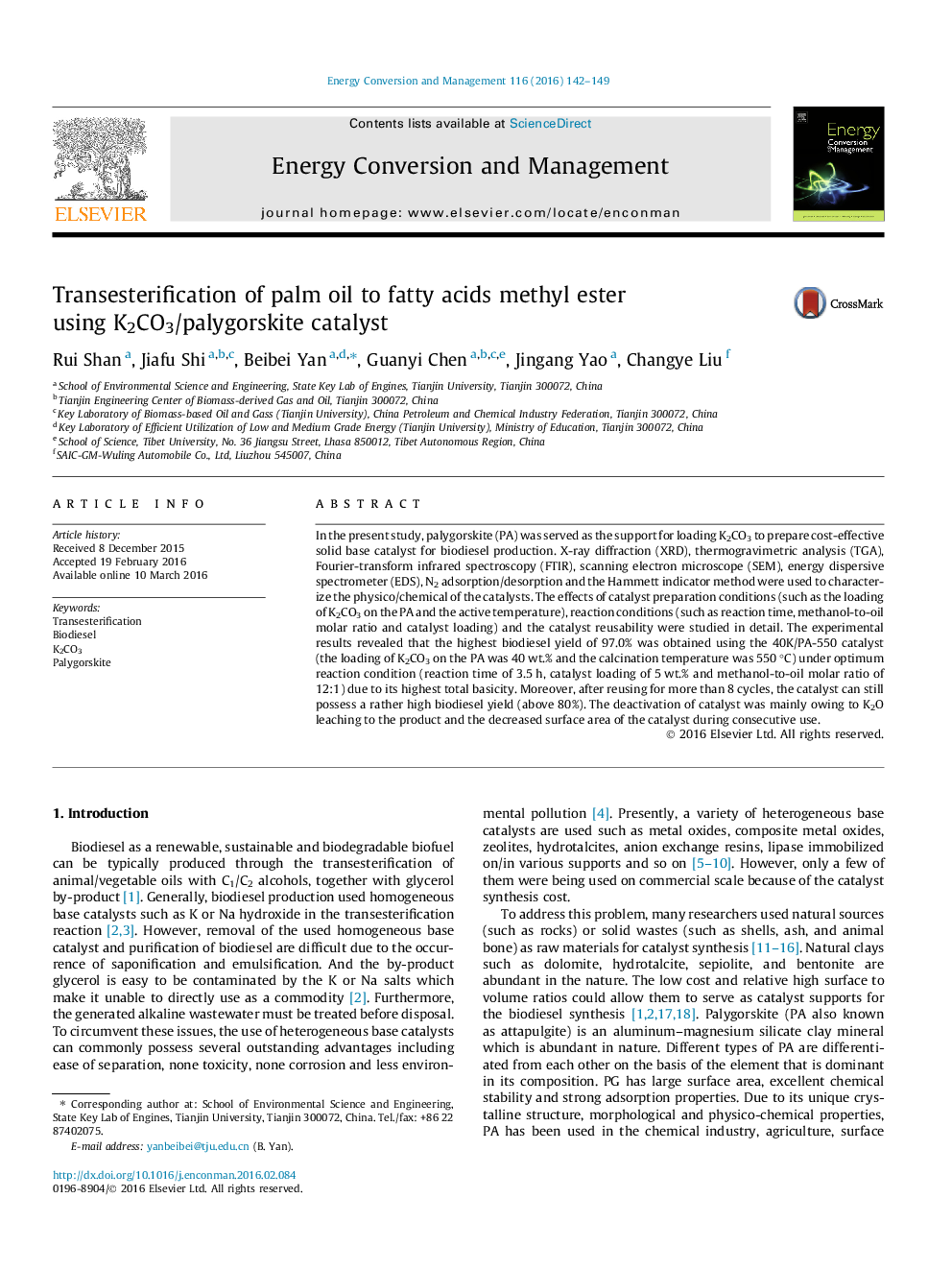| Article ID | Journal | Published Year | Pages | File Type |
|---|---|---|---|---|
| 760238 | Energy Conversion and Management | 2016 | 8 Pages |
•Palygorskite was used as a catalyst support for the transesterification reaction.•The K2CO3-supported palygorskite catalysts exhibited good catalytic performance.•The high biodiesel yield obtained was owing to the high basicity of catalyst.•The main contributions to the basicity of catalyst were K2O and Al–O–K groups.•A little deactivation of catalyst was mainly due to the leaching of K+ ions.
In the present study, palygorskite (PA) was served as the support for loading K2CO3 to prepare cost-effective solid base catalyst for biodiesel production. X-ray diffraction (XRD), thermogravimetric analysis (TGA), Fourier-transform infrared spectroscopy (FTIR), scanning electron microscope (SEM), energy dispersive spectrometer (EDS), N2 adsorption/desorption and the Hammett indicator method were used to characterize the physico/chemical of the catalysts. The effects of catalyst preparation conditions (such as the loading of K2CO3 on the PA and the active temperature), reaction conditions (such as reaction time, methanol-to-oil molar ratio and catalyst loading) and the catalyst reusability were studied in detail. The experimental results revealed that the highest biodiesel yield of 97.0% was obtained using the 40K/PA-550 catalyst (the loading of K2CO3 on the PA was 40 wt.% and the calcination temperature was 550 °C) under optimum reaction condition (reaction time of 3.5 h, catalyst loading of 5 wt.% and methanol-to-oil molar ratio of 12:1) due to its highest total basicity. Moreover, after reusing for more than 8 cycles, the catalyst can still possess a rather high biodiesel yield (above 80%). The deactivation of catalyst was mainly owing to K2O leaching to the product and the decreased surface area of the catalyst during consecutive use.
